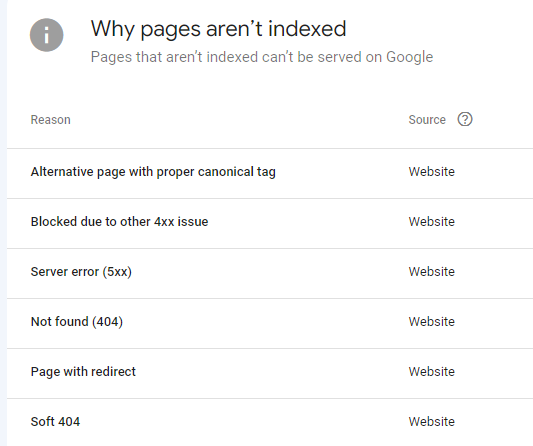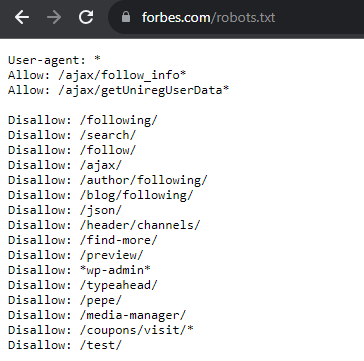So, you’ve got a website, and you want to find all the pages on the website?
Well, you’re in luck!
Finding all the pages on a website may sound like a daunting task, but fear not!
We have a few tricks up our sleeves to make it easy for you.
Here are some of the effective measures that will help you simplify the task by streamlining the process.
Before we delve into the details of finding all the pages on your website, let’s take a moment to understand why you are here and reading this blog.
Perhaps you’re seeking a comprehensive overview of your website’s structure. Or maybe you want to ensure that all pages are properly indexed by search engines.
It could be that you’re looking to improve navigation and user experience by mapping out your website’s content.
Before proceeding to the solution, consider additional factors contributing to the issue. By delving deeper into these reasons, we can ensure a more thorough understanding, leading to more effective resolutions.
Why Do You Need to Find All Pages on a Website?
➢ Website Analysis and Optimization
A website audit is a comprehensive checkup of a website. Whether you’ve redesigned a website or are maintaining an existing one, whatever your situation, a website audit is the best way to ensure your site’s health remains in the positive loop.
Several issues stop Google and other search engines from indexing all pages. Some technical problems include broken links, server errors, slow loading speed, and more.
So, a site audit is an activity that allows you to catch pages with such issues. Ultimately, it will enable the SEOs to estimate the sum of work to be done in the future.
Also Read: Website Optimization Tips To Increase Website Performance
➢ To Find Orphan Pages and Plan Internal Linking
As the name suggests, “orphan pages” have no relation with the other pages of the website. Simply put, a page that is not linked to any other website page. This means a user can not access the page without a direct link. Such pages can endanger the site as a whole. As one of the major ranking factors, Link health is crucial for SEO.
If there are too many orphaned pages, then it will reduce the potential of the content ranking on search engine result pages. Once you find these orphan pages, the first move should be to identify unexplored potential and either re-link or remove them from the website to decrease the risk of index bloat and crawl waste.
Also, drawing accidental users can confuse them with unclear architecture navigation, a sign of a bad user experience.
➢ Content Inventory and Management
Content management is another reason you need a list of all pages on a website, as we know that all pages allow us to manage a content inventory. This inventory can be useful while auditing the content, ensuring consistency, and identifying gaps and outdated information.
It can enrich your content management, letting you organize, update and repurpose the content effectively.
Here’s a procedure for creating and maintaining a content inventory:
- Create a spreadsheet or use a content inventory tool to track the website’s pages.
- Manually go through the page types such as main, subpages, blog posts, product pages, and more.
- Document practical information about each page, such as page title, meta description, URL, last update date, and other useful data.
Also Read: Complete Guide To The Content Management System
➢ Website Redesign and Architecture Modifications
You require a list of all pages on a website along with relevant metrics to plan a website redesign. This information will serve the planning and execution of the redesign process.
Additionally, ensuring that all links are easily accessible within one or two clicks is essential for improving the efficiency and user experience of the website.
Also Read: How Can You Make A Website Look More Professional?
➢ Security and website maintenance
Security and website maintenance are among the most common reasons you need to find all pages on the website.
A comprehensive knowledge of all the pages will be helpful for website security and maintenance purposes. It protects the website from unauthorized access and lingering threats affecting some pages. By regularly checking for new pages or changes, you can promptly address security concerns and keep your website running smoothly.
Now that we’ve covered why you might need to find all pages on a website. Let’s uncover the steps of finding all pages on a website.
Also Read: Does SSL Help SEO? Discover Eye-Opening Insights
How to Find All Pages on a Website?
1. Examine the sitemap (Recommended)
A website sitemap is the most utilized and recommended method for finding all pages on a website online. You will typically find both HTML and XML sitemaps in the website footer. To access the XML sitemap, you need to enter the sitemap URL directly.
It is recommended to check the existing sitemap on the website, as many websites already have a dedicated sitemap link in place. You can usually locate it in the root or footer section of the website.
For example, the XML sitemap URL could be “www.example.com/sitemap.xml“.

Once you click on the sitemap, you will find all pages & subpages of a website.
You can use different sitemap generation tools if you don’t have an existing sitemap. Two popular tools for generating sitemaps are Screaming Frog and XML Sitemaps Generator. If your website is on WordPress, You can use Yoast SEO Plugin.
Also Read: 15 Best SEO Audit Tools For Your Website (Free+Paid)
2. Search with Google search operators
A simple Google search can help you find this in a quick move. Enter the “site: your domain” into the search bar, and Google will find all pages on the website that have been indexed.

It can also be helpful in displaying pages that are hidden or less accessible pages. Browse through the search results to find different pages within the site. This method lets you quickly identify a range of pages indexed by Google.
Please note that this method will only display the pages indexed on Google. You must rely on other tools to identify the rest for the pages that are not indexed.
Using Google search operators, you can uncover a wide range of pages within a website, allowing you to gather a comprehensive list of pages for your website redesign or analysis purposes.
3. Check your pages in the Search Console
Google Search Console, a free tool provided by Google, allows you to monitor and manage your website’s presence in Google Search results. By verifying ownership of your website in Search Console, you gain access to valuable information about how Google indexes your website.
Within the Search Console, you can use the Coverage report to view a list of pages that Google has indexed from your website.
You have to click ‘pages’ & You will see the two tabs ‘Not Indexed’ & ‘Indexed’
This report will show indexing issues, such as excluded pages, errors, or warnings.

Reviewing the coverage report, you can identify any missing or problematic pages and take necessary actions to resolve any issues.
To do this, Enable the ‘Not Indexed’ tab & below you will see the reasons why the pages are not indexed.

Remember that different search engines have different webmaster tools; Bing has the Bing Webmaster tool, while Yandex has Yandex Webmaster.
Also Read: A Complete SEO Strategy Guide For New Websites
4. By Using Screaming Frog
Screaming Frog is one the most popular SEO tools that can be used to find all pages on a website. By entering the website URL into the tool, it will crawl through the site and provide you with a detailed list of pages that it discovers.
It’s important to note that Screaming Frog is paid software. However, a free version is available that allows you to analyze up to 500 pages. If you need to analyze more than 500 pages, you would need to opt for the paid plan.
Screaming Frog offers additional information such as page titles, meta descriptions, response codes, and other on-page elements. This comprehensive overview can be exported and analyzed for website redesign planning.
Also Read: Best Content Management System Platform Optimized For SEO
5. By Using Robots.txt (Recommended for hidden pages)
When it comes to finding hidden pages, one of the most effective methods is examining the Robots.txt file. The Robots.txt is a text file in a website’s root directory. It instructs search engine crawlers on which pages should be crawled, indexed, and excluded.
By examining the Robots.txt file, you can identify hidden pages excluded from search engine indexing.
How to Do?
- Type your website on the search engine like ‘https://example.com/robots.txt’
- Observe the ‘User-agent’ line that specifies the search engine crawler to which the subsequent rules are applicable.
- You have to look for the ‘Disallow’ rules. The rule means that the website owner has instructed web crawlers not to crawl or index specific website pages.
How a Robots.txt file looks like

Wrapping It Up
It’s recap time!
So far, we’ve explored why you may need to find all pages on a website and several methods you can use to find all pages on a website:
- Examine the sitemap (Recommended): Check the XML sitemap, if available, as it provides a comprehensive list of pages intended for search engines.
- Look it up with Google search operators: Utilize specific search operators on Google, such as “site:example.com,” to find indexed pages of a website.
- Check your pages in Search Console: Google Search Console provides a “Coverage” report that displays indexed pages. It can help you identify any indexing or crawling issues.
- Use Screaming Frog: A website crawler tool like Screaming Frog can crawl through a website and generate a list of all pages, including orphan pages and other relevant data.
- Use Robots.txt: If you want to see hidden pages that are not intended for search engines, you can check the Robots.txt file on the website. It may provide insights into pages excluded from indexing.
In conclusion, discovering all pages on a website is a crucial task that serves several important purposes. By comprehensively understanding a website’s structure and content, you can optimize its performance, enhance user experience, and boost search engine rankings.




